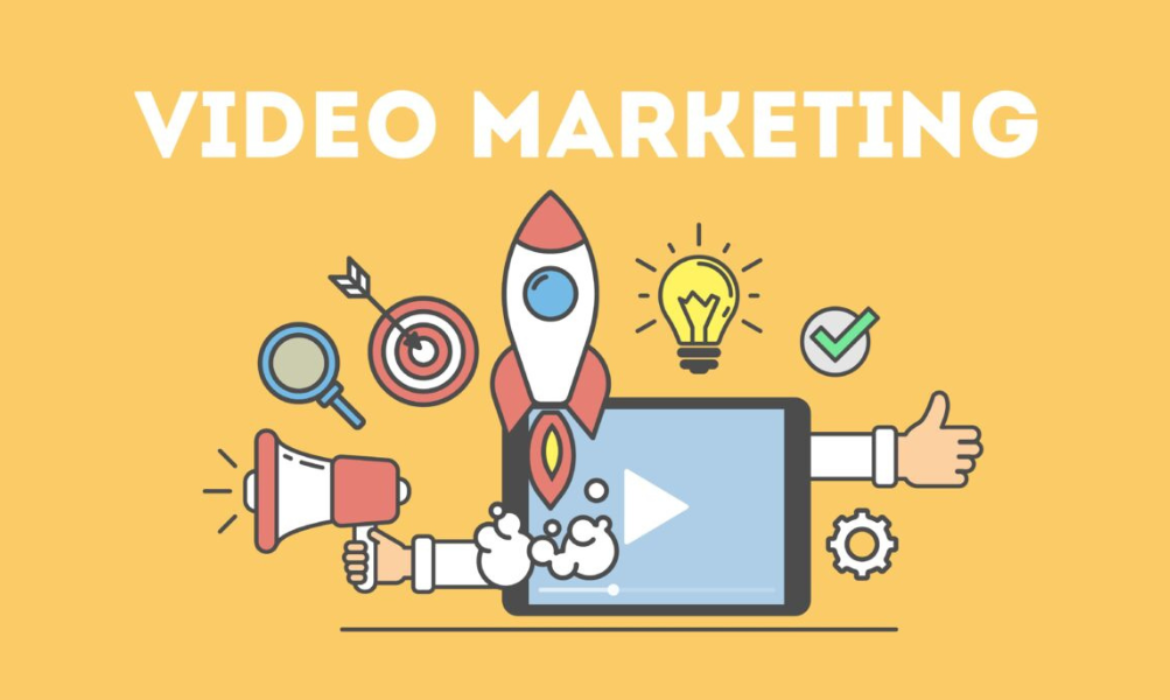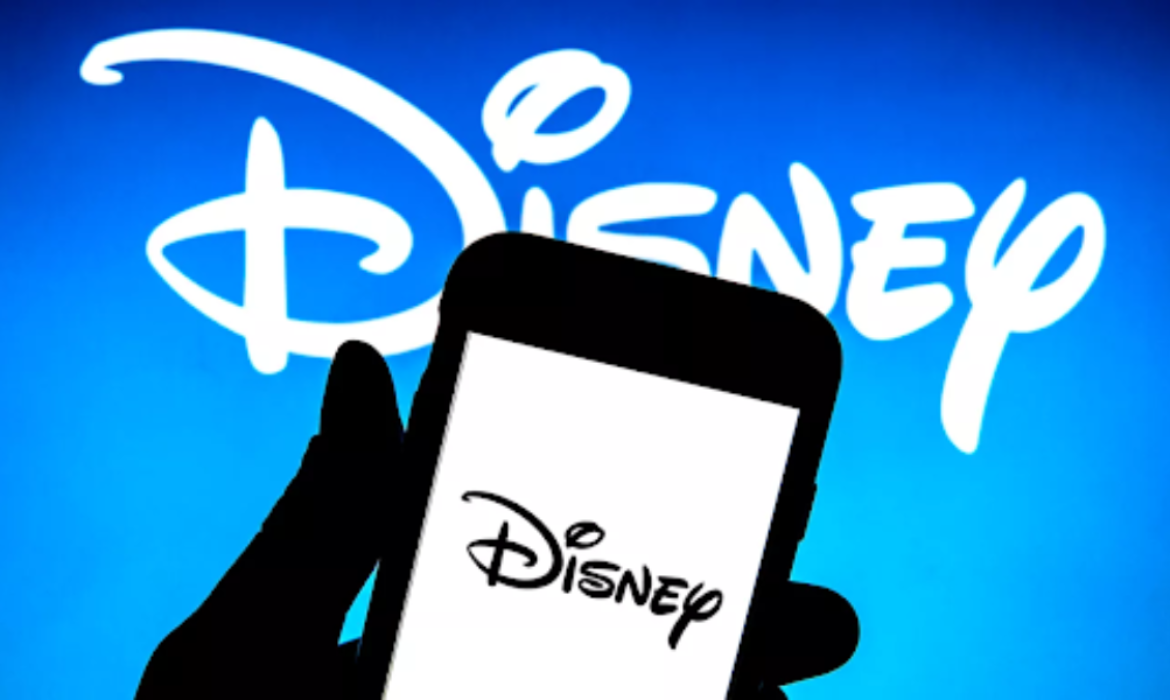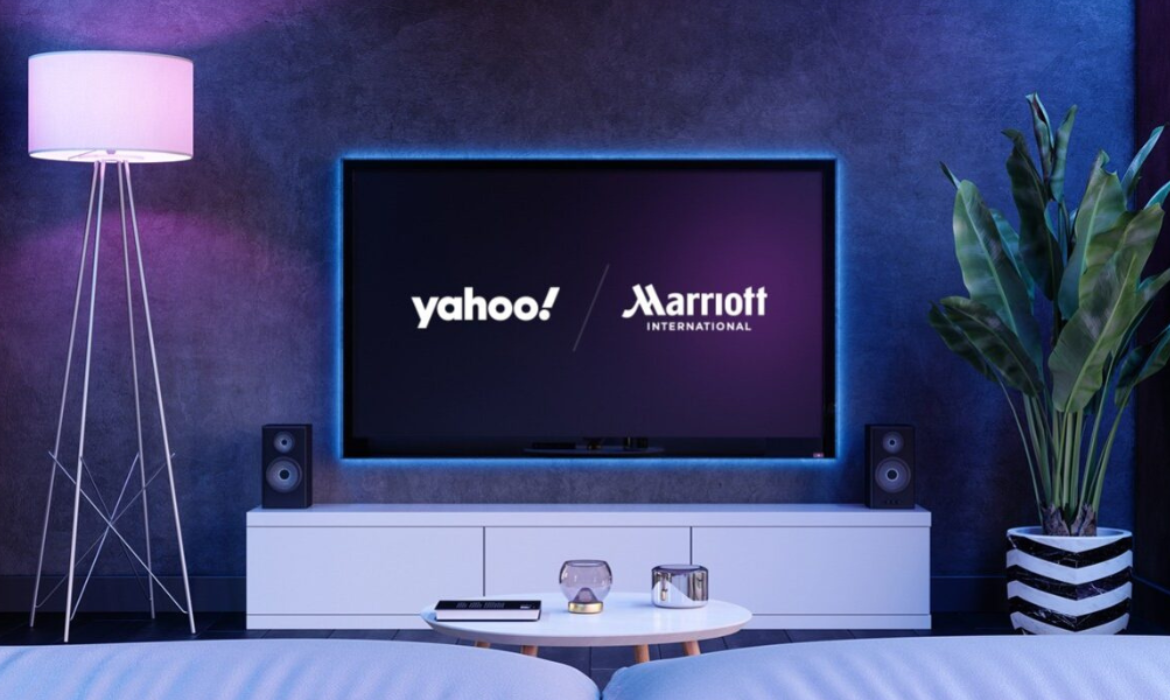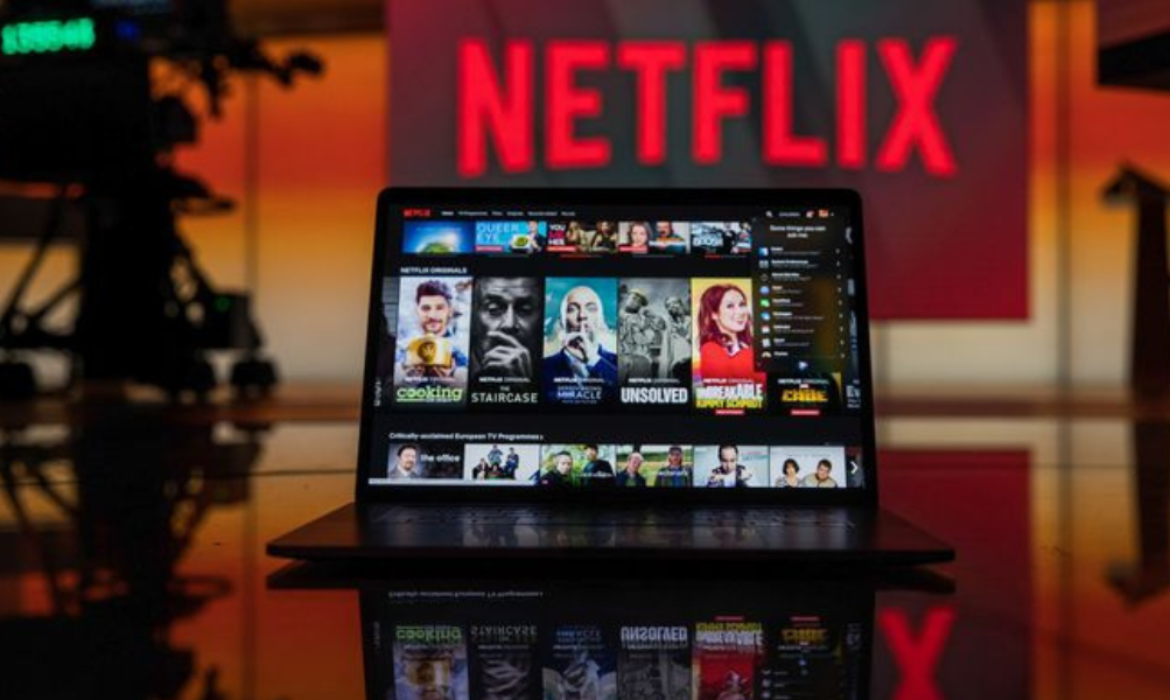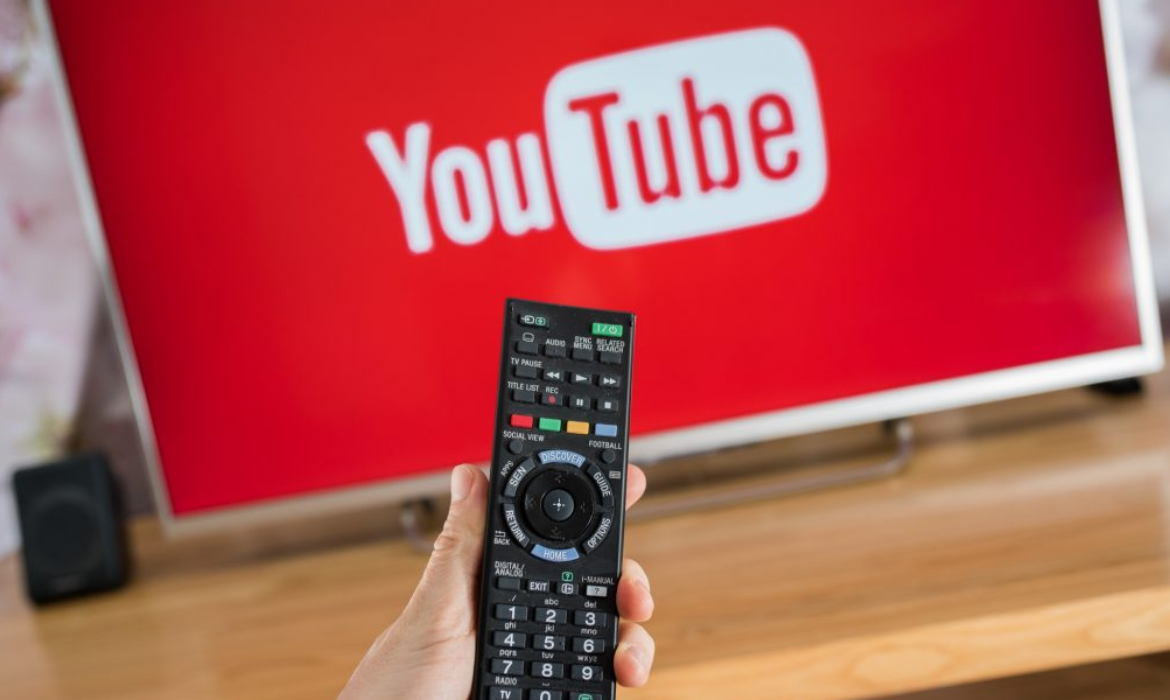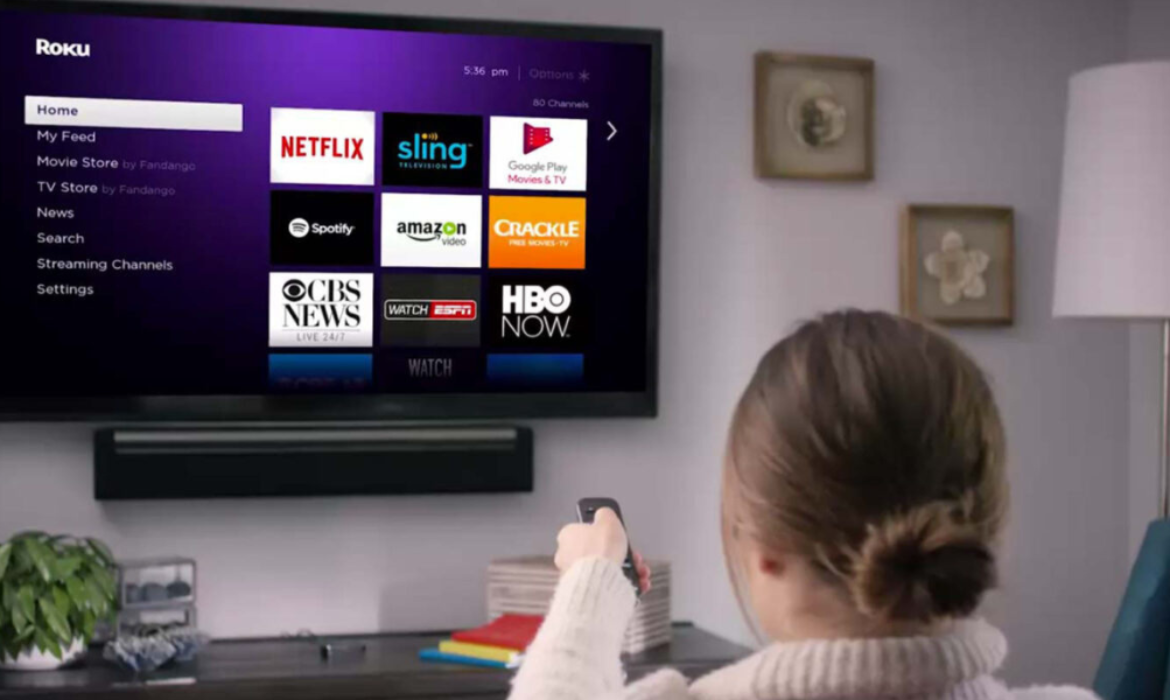Finally Coming! Netflix Reveals Ad Plan Price- Know Everything Here
Finally, the streaming giant unveils its much anticipated ad-supported subscription plan ‘Basic with Ads’.What was once believed unthinkable is a reality today. Ultimately, Netflix needs more revenue and ads are one of the resources to achieve it.
Netflix announced on the press call that it is introducing a lower-priced ad-supported plan for $6.99. The new subscription plan ‘Basic with Ads’ is $3 less than the current cheapest Netflix plan without ads.
And the surprising part is that Nielsen will be Netflix’s audience measurement partner, which is criticized for reporting inaccurate streaming data.
Know everything about the Basic ad plan
Markets: To start with, it will be rolled out in 12 countries- Australia, Brazil, Canada, France, Germany, Italy, Japan, Korea, Mexico, Spain, the UK, and the US minus India.
Launch date: On November 1, Canada and Mexico subscribers are the first to try the new plan. It will then roll out to the U.S., the U.K., France, Germany, Italy, Australia, Japan, Korea, and Brazil on November 3. Spain will be the last to experience the cheaper tier when it launches on November 10.
Pricing: Basic with Ads will cost just $6.99 a month in the US. It will not increase the price of the existing plans. The streaming giant will beat rival Disney+ by one month, which is hiking the price of its ad-free plan along with the launch of an ad-supported plan on December 8.

Credit: Tech Crunch
Let us analyze and compare the pricing with the competitors

Features of the Plan
Video quality only up to 720p/HD (now for both Basic with Ads and Basic plans); an average of 4 to 5 minutes of ads per hour; a limited number of movies and TV shows won’t be available due to licensing restrictions, which they are working on, and no ability to download titles.
Apparently, the percentage of unavailable titles differs depending on the country, Tech Crunch reports. As of launch, approximately 5% to 10% of the Netflix catalog will not be available in the ad-supported plan. Netflix will work to reduce that number as time goes on.
Offline Viewing: Furthermore, offline viewing would not be possible, which is characteristic of many AVOD services (ad-supported video-on-demand).
Contrary to early 2023 opinions, Netflix announced the Basic with Ads plan six months after unveiling its lower-cost ads plan. The company wrote, None of this would have been possible without our team’s hard work or Microsoft’s extraordinary partnership. The switch from linear is happening at an ever-increasing speed, with streaming now surpassing broadcast and cable in the US.
“We’re confident that with Netflix starting at $6.99 a month, we now have a price and plan for every fan. While it’s still very early days, we’re pleased with the interest from both consumers and the advertising community — and couldn’t be more excited about what’s ahead. As we learn from and improve the experience, we expect to launch in more countries over time.”
Exciting times for advertisers
Netflix’s announcement of an ad-supported subscription plan marks a milestone in its 25-year history. Ad companies will also benefit from Basic with Ads, the company said,
“the chance to reach a diverse audience, including younger viewers who increasingly don’t watch linear TV, in a premium environment with a seamless, high-resolution ads experience.”
Ad Format: Each ad will be 15 or 30 seconds in length, which will play before and during shows and films. New Netflix movies will have pre-roll ads without interruptions. Older movies, however, will receive preroll and midroll ads.
Advertiser Controls: Netflix will offer broad targeting capabilities by country and genre (e.g. action, drama, romance, sci-fi) to help advertisers reach the right audience and ensure ads are more relevant for consumers Advertisers will also be able to prevent their ads from appearing on content that might be inconsistent with their brand.
Verification Tools: Netflix has partnered with DoubleVerify and Integral Ad Science to verify the viewability and traffic validity of the ads starting in Q1 2023. These companies will ensure ads run where they’re supposed to and that they conform to industry standards. DoubleVerify will provide viewability and IVT verifications that will be valuable for advertisers’ marketing goals.
Audience Measurement: To enable advertisers to understand how Netflix can reach their target audience, Nielsen will use its Digital Ad Ratings (DAR) in the U.S. This will become available sometime in 2023 and eventually be reported through Nielsen ONE Ads.
In addition, Netflix is measuring its UK streaming numbers with the British TV rating agency Broadcasters Audience Research Board. An unrevealing move for a streaming service famous for its close-mouthedness about viewership figures.
Omida research suggests that 60% of Global Netflix Subs to Use Ad-Supported Option by 2027. New subscribers would be acquired and existing subscribers would be transitioned to the ad tier as part of this change.

Credit: Omida
The announcement of the news comes ahead of Netflix’s Q3 earnings announcement, which will be released next Tuesday, October 18. Whether Netflix of the future will be different from Netflix of the past will be determined by the next few years.
Are Podcasters using Mobile Game Ads Tactic To Buy Listens?
Mobile game ads help podcast makers reach millions of listeners. Wondering, how is this possible.
The idea is a mobile in-game reward ad is served to players who click on it to gain digital loot. In return, the user downloads a podcast episode in the background.
By tapping on the ad, which may be enticingly rewarded with in-game rewards, players automatically download an episode from a podcast they may have never heard before. It allows the podcast company to claim an additional download and a new listener.
A win-win for all! Game developers require advertising revenue, especially from non-gaming apps. Users receive their favorite rewards in-game. Moreover, podcasters win because downloads are their main metric. However, this brings into question who can be recognized as a podcast listener and what time span to be considered as a download. This is debatable and analysts suggest that it could devalue the main metrics -downloads and listens for ad sales.
According to Bloomberg, ads are inserted into episodes as soon as they are downloaded, so whether or not a user listens long enough for the ads to play, another impression is counted by network sales. A person can listen to an episode even without an internet connection if they tap on the in-app play button on their mobile device. A 30-minute episode’s ads are placed at that point of download, so even if a consumer listens to only 10 minutes, the mid-roll ad at the 15-minute mark is already there, ready to be heard, and counted.
The numbers say it all
Jun Group, an intermediary company helps podcast networks that are enjoying downloads in the mobile game space. As Ashley Carman stated in Bloomberg, the price charged to podcast networks for the ads depends on the target criteria- demographics or attracting listeners. The starting rate for a 20-second ad is $27 per 1,000 website page views. Eventually, podcast networks will be able to sell the resulting audience to brand advertisers for a nice profit over what Jun Group is paid.
There is no mention in the podcast industry of embracing the video game strategy. In fact, podcast ad deals are determined by downloads and not the listening behavior or numbers that remain undisclosed. Additionally, podcast ads are not programmatic which means the ads with downloads are not served in real time. In other words, the ad is still counted even if the podcast is deleted without ever being opened. Podcaster Scott Saslov, who uses the in-game reward ads tactic told Bloomberg,
“Don’t rely on exclusively because at some point you’re going to want as much organic and authentic growth as you can get.”
He also pointed out that in-game reward ads aren’t exclusive to podcasters but publishers also use this strategy to increase traffic.
The audio industry is growing
There are heavy investments in the audio industry. Companies are making the best possible move to recover it. They are increasing the reach of podcasts and bringing more ad revenue. The way ads are placed in podcasts has changed significantly over the last couple of years. It is projected that the industry will generate $2 billion in revenue this year and $4 billion by 2024. The growth is not because of a high number of podcasts or listening but advances in ad tech that allows advertisers to better target audiences and encourage them to spend more money.
Interesting Read: Targetspot and Gadsme Unites to Launch In-Game Audio Ads
Video Marketing Statistics You Can’t Ignore in 2022
Video is a great way to market your business. As a result, video marketing has become one of the most popular ways of marketing.
According to several portals, approximately 96% of people increased their consumption of videos about businesses, and 9 out of 10 people prefer watching videos about brands and companies. Moreover, 86% of businesses started using video as a business tool in 2022.
Therefore, video marketing statistics cannot be ignored if one wants to promote and advertise a business online. Videos are integral to marketing and promoting your products to new audiences.
This article will explore video marketing statistics you cannot miss in 2022.
Video Marketing Statistics You Cannot Ignore in 2022

Image Credit-Piktochart
To develop your digital/video marketing strategy, you need to know the latest video marketing statistics. Listed below are the latest video marketing statistics you simply cannot miss in 2022:
Increasing Internet Consumption
- According to Wyzowl, In 2018, the average time for watching videos was 1.5 hours per day. But in 2022, the number of hours increased to 2.5 hours a day.
- Moreover, research shows that people watch videos for about 19 hours a week, an 8.5 hours spike from the last four years.
Convincing Customers
- According to the survey conducted by Wyzowl, 96% of people have watched the tutorials and explanation videos to learn more about the products in 2022.
- Furthermore, 88% of people have said that they have been convinced to buy a company’s product after watching their videos.
- According to Hubspot, in 2018, 54% of people want to watch more videos about brands and companies to know more about their products.
- Also, research conducted by Animoto in 2018 suggests videos are the favorite type of content to view from a business across social media platforms.
- Social Media Week studies show that 78% of people watch videos every week, and 55% of people watch videos daily.
- According to Insivia, 95% of the audience can remember the products and their message when they watch them in a video rather than reading about them.
- According to 59% of executives, the audience is most likely to choose video over text about the same topic. 92% of mobile phone users are more likely to share the videos they watch about any product or company.
- According to Wyzowl, people are twice more likely to share videos rather than sharing blog posts or written articles. Therefore, video marketers and editors must post short, crisp, well-edited videos about their products. They can easily edit a video online and make engaging content.
Increase in Revenue
- According to Wyzowl, in 2022, 87% of business owners stated that video marketing has helped increase website traffic.
- Moreover, 94% of people also stated that videos helped them better understand their products, according to Wyzowl in 2022.
- 83% of business owners have stated that videos encourage visitors to visit and explore their websites for a long time.
- According to HubSpot, 87% of video editors are content with the ROI of their video editing efforts. Furthermore, 93% of business owners claim that videos are integral to their marketing strategy.
- WordStream suggests that incorporating videos into your business website’s landing page will increase your conversion rate by approximately 80%.
- Optinmonster research in 2019 shows that video marketers are 66% more likely to get better leads every year.
- According to Wyzowl, in 2022, 81% of video marketers stated that videos have helped them improve their product sales. Moreover, 49% said that videos had led to a reduction in support calls about various products as they allow customers to solve their queries.
- According to Wyzowl, 93% of video marketers have stated that videos have increased brand awareness to a large extent.
- According to Tubular Insights, 64% of consumers are likely to buy a product after they have watched a video about it on social media. Furthermore, according to HubSpot, video is the number one type of content marketers produce.
- According to Small biz Trends, 30% of people can recollect the video ads about products they have seen in the past 30 days. Therefore, you must make an impactful ad that interests the customers.
Video Usage Trends

Image Credit: Wyzowl
- According to research conducted by Wyzowl, Video marketers consider videos a pretty important part of their marketing plan.
- According to research by The Marketing Helpline, video posts on social media get 48% more views than typically written posts about the products. Therefore, you can create and edit crisp and attractive posts about your products and share them on social media instead of posting a written post about them to promote your products.
- According to the statistics provided by Oberlo, Youtube with 88% is the most popular platform to edit videos, post, and share them, followed by Facebook with 76%, LinkedIn with 66%, and Instagram with 65%. Therefore, you can easily create and post videos on these platforms to gain new customers for your products.
- According to Hubspot, 73% of people prefer watching entertaining videos. Hence, to digitally promote your content, you can edit videos to make them fun and engaging enough for the audience.
- According to Limelight, 65% of consumers state that their favorite platform to watch videos is Youtube. Therefore, Youtube is one of the best and most important platforms to share your videos.
Video Marketing Channels
- According to Wyzowl, 88% of marketers have included Youtube as an integral part of their digital marketing strategy in 2022, which is 1% less than last year. However, 68% of marketers have included LinkedIn as a part of their marketing strategy, which is 5% more than last year. Therefore, video marketers consider LinkedIn a good platform to share their videos about their company and products.
- According to Wyzowl, 65% of marketers have plans to bring in Facebook as a part of their marketing strategy, which is 5% less than last year. Moreover, 68% of marketers have plans to include Instagram in their marketing strategy, which is 10% more than last year. This data shows that Instagram is a more popular platform for marketers to add videos about their company and products and share them rather than Facebook.
- According to WyzOwl, 46% of marketers have plans to host webinars about their company and products in their marketing strategy in 2022, which is 7% less than last year. This data shows that marketers prefer to share them on social media instead of conducting elaborate webinars to grab the attention of consumers quickly.
- According to YotPo, 30% of consumers have brought products mentioned in videos they have seen on Instagram. Moreover, according to Mention, 7 out of 10 people check out the website links in stories. Therefore, if you still have not included Instagram in your marketing strategy, it is high time you include the platform in your marketing strategy to get more engagement on your products.
- According to LinkedIn, posts with videos are shared 20 times more than written posts on the platform. However, 80% of the videos are watched with the sound off, so you should create videos that can be viewed without sound to gain the audience’s attention on LinkedIn.
- According to Wyzowl, 29% of marketers have plans to use Twitter as a part of their marketing strategy in 2022, which is 2% less than last year. However, according to the data provided by Twitter, the platform gets 2 billion views on videos daily, and tweets including videos have ten times more reach than tweets without videos.
- 99% of video marketers have decided to continue using videos for marketing in 2021. Moreover, data shows that more than 66% will spend more or the same amount on videos in 2022.
Impact of The Pandemic
- According to Wyzowl, the pandemic has drastically affected video editors’ plans for 2021 and 2022. However, the pandemic’s impact on video marketing seems to be gradually decreasing as 50% of video marketers expect the pandemic to affect their video marketing budget in 2022, less than 63% last year.
- According to Wyzowl, three-quarters of video marketers have stated that the pandemic would make it likely to produce more videos. At the same time, the other half said that the pandemic would decrease video production.
- According to Hubspot, 96% of people have stated that the pandemic has increased their video consumption.
Key Takeaway
Listed below are some key takeaways:
- Video has gradually become one of the most consumed content on the internet, so you must use this to promote your brand and products and establish a loyal customer base online
- Youtube, Facebook, Instagram, and LinkedIn seems to be the most favorable platform for posting videos
- Furthermore, the statistics suggest that your account will likely get more reach and engagement if you include videos in your posts; therefore, videos will help your business and products reach social media audiences
- Higher engagement rates in videos ultimately convert to higher consumption rates and buy-ins, i.e., people are more convinced to buy a product once they watch a video about it online.
- Investing in video marketing is always a good option since video marketing helps you gain higher engagement, promote your products, interact with your audience and provide you with higher ROI
WeAreSocial reported more than 3.5 billion social media users in 2019. IBM partnered with Mettle CI to create fun and entertaining videos to explain technology easily to their audience, thus gaining popularity on social media.
Business owners and video marketers must take advantage of this extensive reach and promote their products online.
Disney Signs A Major Adtech Deal With The Trade Desk
Disney inked a landmark adtech deal with The Trade Desk. This makes it possible for brands to target automated ads across Disney’s linear and streaming properties using data matched on the back end from Disney and The Trade Desk. The deal will power greater audience activation at scale programmatically.
What makes this deal so important:
-In the era of third-party tracking that is fading away, this is one of the largest efforts to come up with a new system of ad targeting. It will likely spark more similar partnerships between media companies and big ad tech firms.
-Disney wants to make sure its inventory is as addressable as possible. The partnership with leading adtech company, The Trade Desk will enable advertisers to activate their own first-party data to enrich Disney ad impressions, improve ROI, and drive relevance while also protecting consumer privacy.
-Disney can sell more ads at scale with automation, and the Trade Desk partnership will allow advertisers to buy automated ads without giving up their ability to target them precisely.
Interesting Read: Clean Rooms Explained: How Marketers Can Prepare For Cookieless World
Details
-In the deal, Disney integrates data from its Clean Room, a privacy-conscious repository of user data Disney gathers directly from its users. They then match it with personalized data created by a framework called Unified ID 2.0, promoted by The Trade Desk.
-This agreement will enable a first-of-its-kind integration between Disney’s proprietary Audience Graph and the open-source identity framework, Unified ID 2.0, within a secure environment. As a result, buyers will be able to discover more addressable, biddable inventory across the Disney portfolio, all validated by Disney’s proprietary Audience Graph.
-Disney has previously said it wants to automate 50% of its business by 2026. At last year’s upfront advertising sales event, over 40% of the ad inventory Disney sold was automated. The deal will help them achieve the goal.
-Disney has years of experience with adtech and is working to strengthen its tech capabilities. A few months back, the company also inked an adtech deal with Horizon Media to measure ads.
-Disney is in partnership with Hulu has built its own server and has enormous experience in advertising VOD space.
-As the streaming advertising landscape becomes more competitive, The Trade Desk partnership surfaces just as Disney is working on its ad-supported tier for Disney+. Because this will work across Disney’s inventory and is designed to automate ad buying across channels and services, it makes sense that Disney+’s forthcoming ad-supported tier would be included in the future.
Bottom Line
Disney’s agreement with The Trade Desk is a key milestone in enabling greater interoperability with the programmatic ecosystem at large while setting the stage to power better audience activation and measurement.
Digital television advertising has long been a Disney forte, but now more streaming services, such as Netflix, are considering digital advertising.
Interesting Read: AVOD Surprise: Netflix Advertising Powered By Microsoft
And they said
Aaron LaBerge, President, and Chief Technology Officer, Disney Media & Entertainment Distribution-
“Disney is reimagining our advertising platform to support a global and addressable future. We are uniquely positioned to match the world’s greatest content with next-generation products and technologies, through a secure and unified ad platform, and one-of-a-kind first-party data. The growth of our relationship with The Trade Desk is a milestone in addressability and automated buying at scale, and the latest step as we use technology to enable advertisers to buy once to deliver everywhere across Disney.”
-Tim Sims, Chief Revenue Officer, The Trade Desk-
“With this agreement, Disney and The Trade Desk are pioneering a new approach to audience addressability in a post-cookie environment. By creating interoperability between Unified ID 2.0 and Disney’s Audience Graph, we are unlocking the opportunity for our customers to activate their first-party data at scale programmatically, against some of the world’s most premium content, across all channels. As a result, advertisers will be able to deliver relevant advertising, while ensuring consumers have more control of their own privacy.”
Interesting Read: Marriott International : A Hotel or An Ad Tech Company?
Marriott International : A Hotel or An Ad Tech Company?
Major international companies have entered the world of advertising to drive revenue for advertisers by leveraging their tech platforms and first-party data.
Does that seem like 90% of business for 2022?
Following on the heels of retail media success stories, Marriott, the world’s largest hotel group, launched a new advertising platform ‘Mariott Media Network.”. And this hotel juggernaut is more likely to succeed than not.
As Marriott put it,
“Marriott’s audience has intent, and travelers will be in the right mindset when receiving these offerings.”
Why Does It Matter?
Marriott Media Network is described as an “omnichannel cross-platform advertising solution for brand advertisers. Marriott can thus offer advertisers new ways to reach travelers – an audience often on the lookout for new experiences with discretionary funds available. An advertising network can also advertise products that travelers may be interested in besides future bookings. As part of this endeavor, Marriott has exclusively partnered with Yahoo.
First Party Data
Apple’s privacy effort has impacted travel marketing. App developers increasingly need users’ consent to track their online behavior. As consumers opt out in large numbers, brands, and ad sellers are increasingly looking to use “first-party data”. Data like customers’ profiles, search history, and reservations act as a first-party data source for advertisers. Marriott plans to tap into its treasure trove of first-party data
Reach
Marriott says it has 8,000 properties under 30 brands spanning 139 countries. Advertisers will have access to more than 164 million Marriott Bonvoy members and renowned loyalty programs. The program allows Marriott to know when its members are traveling, which means brands will likely be able to target travelers before their trip, and while they’re captive in Marriott’s quarters.
It is also planning to extend its reach to non-endemic advertiser categories, notably airline, ride-sharing, and restaurant bookings.
Revenues
In the ad tech world, advertisers are willing to spend money but do not have sufficient and reliable inventory. Considering Marriott’s CRM data and large reach, advertisers may see this as a viable alternative to Google and Facebook.
Interesting Read: Unlock The CTV Opportunity: What The Future Looks Like
Targeting
Marriott is being cautious about programmatic targeting and will not venture into audience network play. With leisure travel volumes returning to pre-pandemic levels, this is a good opportunity for those who want to target a specific segment of travelers.
The company serves ads for now across its owned channels, including display, mobile, video, email, and digital out-of-home (in-room TVs and digital screens in lobbies, gyms, and bars) once fully implemented.
It will show how a travel media network fits into a brand’s media strategy. For instance, an apparel company might identify customers traveling to a ski resort, while an entertainment company might advertise shows, events, or whatever fun things are available in a particular city.
In fact, even small (local) advertisers would get an opportunity to display their offerings. Marketers will be able to reach consumers who are looking for specific services, experiences, and entertainment options in the city or locale they are visiting.
CTV- a better option
CTV ad campaigns enjoy much higher engagement rates than traditional ads. It achieves high-performance results for brands – 94% viewer completion rate compared to just 74% and 69% on PC and mobile devices, respectively.
Advertisers now have a perfect platform to shine on the 42-inch TV in every Marriott room. There is no better way to link the TV screens in hotels with connected TV (CTV) than through programmatic advertising.
The streaming platforms Netflix, Disney+, Hulu, and others are looking into ways of monetizing viewers with CTV inventory. And Mariott adding a CTV inventory to its offering opens up a whole new viewing context, during travel.
Interesting Read: Connected TV Explained: The Essential Glossary Of CTV
Full stack
The Marriott Media Network uses Yahoo as an exclusive SSP. Yahoo’s supply side platform serves as a platform for advertisers to buy inventory. As a result, the Yahoo advertising team will manage demand generation and sales across Marriott paid media and the Marriott Media Network utilizing Yahoo’s demand-side platform. The Marriott supply can be measured and targeted holistically across all of Yahoo’s open web programmatic inventory.
Privacy
Legislation like GDPR in the EU and CCPA in the US, privacy changes by Apple, and the forecast demise of the third-party cookie have severely hampered advertisers’ ability to target customers. Brands are seeking new avenues to reach consumers.
Marriott’s media network is a “demand and supply solution for the cookieless world,” -Iván Markman, Chief business officer at Yahoo.
The media network will not share customers’ personally identifiable information (PII) with the advertisers. It will leverage anonymized customer data that will help to curate the content on behalf of the advertiser to display relevant ads to travelers.
Yahoo, the ad tech partner, will match anonymized customer data with advertisers’ data. Advertisers will shop for ad inventory via Yahoo’s portal and sales team.
Untapped ad prospects
The addition of a new layer of revenue is an amazing opportunity for Mariott. Though it has had an advertising business for more than a decade this is its first programmatic offering which has immense potential for growth.
Assuming an average occupancy rate of 75% in 2021 and at least 5 ads shown per day at $40-$50 CPM adding additional revenue to its bottom line. The reported revenue is $13.86 billion in 2021. Also, the partnership with Yahoo means a low cost of ad sales.
Presently, the most lucrative and growing market for Mariott International is China. It has 448 hotels spanning 23 brands across more than 110 cities in Greater China. The country with the highest population is the most brand loyal to the hotels. The largest consumer economy has the elite and affluent travelers. The pandemic has prompted them to explore destinations closer to home. An opportunity for Mariott too good to be missed!
Bottom Line
Through a partnership with Yahoo, Marriott is launching an advertising platform to better monetize its substantial customer base. It will support advertisers and publishers in unlocking the full value of their content, audiences, and marketing. Also, Mariott will not be hindered by varying regulations of any country, because it owns the first-party data (information on guests received from loyalty membership).
So next time, one can expect ads that might be potentially relevant on Marriott’s owned properties – website, app, or room TV screens as opposed to welcome messages. Marriott’s move is indicative of a larger trend within the travel industry. And why not? Brands can get around rising operating expenses and establish a new revenue stream with it. Till then Bon Voyage!
Interesting Read: 6 Data Privacy Trends To Look Out For In 2022!
Another threat to the duopoly: How is Vodafone Idea foraying into the adtech industry?
Vodafone Idea has launched its ad-tech platform called Vi Ads, driven by artificial intelligence (AI) and machine learning (ML), to give marketers an ROI-focused programmatic media buying platform. The telecom operator rolled out Vi Ads with the aim of participating as a major player in the multibillion-dollar Indian ad tech industry.
How will Vi Ads benefit?
It is a self-serve interface that helps marketers set up campaigns, track them, derive personalized insight, and enable targeted outreach. Vi Ads is built to achieve full-funnel campaign objectives from awareness to purchase.
Banking on Vi’s deep data science technology, Vi Ads will enable marketers to engage with the operator’s over 243 million subscribers through multiple channels like Vi-owned digital media — Vi App, Vi Movies, and TV App, and traditional channels like SMS, and IVR calls. The company highlighted the below aspects that distinguish Vi ads:
1. It offers precision targeting not only on the company’s digital assets but also on external third-party programmatic media.
2. It will not be media-specific and enable marketers to engage with Vi users on external media channels and publisher partners of Vi Ads.
3. Marketers can benefit from unique audience segments, interest groups, and targeting parameters derived from Vi’s deep consumer insights built on opt-in consumer data.
Avneesh Khosla, chief marketing officer, Vi said,
“With our programmatic platform – Vi Ads, we will address two of the biggest challenges faced by marketers today – authentic insights and enhanced reach.”
He further added,
“This is a simple, easy to use, and highly efficient solution for marketers to effectively reach out to the right target group with the most relevant messaging at any given point of time, while also providing a monetization opportunity to Vi as we aggressively build and scale our digital assets.”
Interesting Read: Is Google Joining The ONDC Bandwagon With Paytm And PhonePe In The Race?
Vi Ads collaboration
Vi Ads is developed in collaboration with TorcAi, a provider of audience infrastructure and programmatic solutions. It leverages advanced data sciences & machine learning to weave together legacy marketing and advertising technology platforms with new-breed tech. Rohit Verma, CEO TorcAi Digital said,
“This partnership, and the development of the Vi Ads platform, will enable Vi to connect their vast stores of customer insights with advertisers, and publishers, to deliver the right message, at the perfect time.”
Is the entry of telecom operators a threat to the duopoly in the digital advertising market?
In the fast-growing Indian digital advertising market, telecom operators Bharti Airtel, Jio, and Vodafone Idea have launched their own platforms to compete with tech and eCommerce giants like Google, Meta, Amazon, and Flipkart.
The combined revenue of Google and Meta grew to Rs 23,000 crore in FY21 whereas Amazon India and Flipkart generated cumulative advertising revenue of Rs 3900 crore. Digital advertising is sure to undergo a major change as the telcos are going all out to make advertising an additional revenue stream.
In early 2021, telecom provider Bharti Airtel launched its Adtech platform- Airtel Ads and Reliance Jio launched its JioAds later in the year. The three largest telecom operators have a huge opportunity in the digital ecosystem as they collectively own 1.16 billion users and have access to such vast data reserves. As Google plans to phase out third-party cookies by the end of 2023, they are best positioned to take advantage of the fact that they have access to authentic first-party data.
In the case of Airtel, brands can access its 350 million+ customers through various digital platforms via Airtel Ads. It also acquired a strategic stake in the startup Aqilliz to integrate the latter’s advanced blockchain technologies across its fast-growing offerings in Adtech, Digital Entertainment, and Digital Marketplace.
Similarly, JioAds offers advertisers access to reach 450 million+ users through online and offline media assets. The JioAds ecosystem offerings spread across Connectivity, Entertainment, and Commerce. A major selling point for advertisers of JioAds is its brand-safe omnichannel network.
A first-party platform is ideally suited for addressing the question of trust and privacy in digital advertising. Ad tech has seen significant growth and innovation in India due to the digital revolution, which has also led to a higher volume of investments in the industry. The Indian market will be interesting to see if the new entrants can overtake the duopoly and eCommerce companies.
Interesting Read: How Will Partnership With Criteo Benefit Flipkart’s AdTech Business?
AVOD strategy For Netflix Ahead: Should Advertisers Rejoice?
Netflix plans to add ads. Yes, you read it right and it is the moment advertisers have been waiting for.
Netflix has been resisting advertising on its streaming service for years, but now it says it is “open” to charging lower rates for ads. Reed Hastings, co-chief executive of Netflix, says the company is introducing ad-supported plans to give customers more options. The company recently reported a loss of 200,000 subscribers in the first quarter.
“Those who have followed Netflix know that I’ve been against the complexity of advertising and a big fan of the simplicity of subscription. But as much I’m a fan of that, I’m a bigger fan of consumer choice.”
The news that Netflix is considering ad-supported options is the antithesis of its very essence- not to embrace ads. With Netflix’s position as the world’s largest subscription service and its vast user data, the service will soon become one of the highest-valued advertising platforms. And this makes many wonder that is Netflix AVOD for real? Find out below.
Interesting Read: Here, There, Everywhere, It Is Cross-Screen Advertising!
AVOD, an evolving marketplace
Millions of Netflix users were delighted with Netflix’s ad-free experience. The platform gained subscribers, increased its content budget, attracted more users, and so on and so forth. The competition, however, has diverted customers and increased Netflix’s costs. In order to grow, the streaming giant has to explore other sources of income except for subscriptions. A new AVOD service can significantly contribute to Netflix’s growth.
Streaming fans are seeing their TV bills climb as they pay for separate platforms to watch hit shows, such as Disney+, Amazon, Hulu, and Netflix. Several streaming services offer different tiers of subscriptions. Viewers can choose to have their shows interrupted with ads for a small fee. Even before Netflix’s dismal subscriber news, the new survey data from Accenture shows that consumers “don’t mind” adverts.
- 63% of consumers think it’s too expensive to pay for all the entertainment subscriptions they want
- 73% of consumers said that they would not pay more to remove ads from their shows
- 88% of consumers plan “no change” or a “decrease” in their entertainment spending next year
For instance, Warner Bros. Discovery’s HBO Max offers a premium ad-free tier at $14.99 per month and a $9.99 tier with ads. Advertisers have viewed this opening as a turning point both for Netflix and the overall stance of the industry. Consumers are put in charge. Since they are paying less voluntarily, they accept the ads too. Netflix’s offering would be a plan layer like Hulu, meaning that if subscribers still want the ad-free option, they’d be able to have that along with a lower price plan for ad-tolerant consumers.
Consumers, marketers, ad tech, and Netflix stand to gain as the deal increases its bottom line by billions.
Interesting Read: All You Need To Know About Connected TV Advertising!
Is joining hands with adtech the right way?
Netflix is the last major game-changer in the market for ad-supported video on demand (AVOD). The streaming giant is yet to clarify how an ad-supported tier would operate; however, it would join competitors like Peacock, Hulu, HBO Max, and the recently announced Disney+.
Disney and NBCUniversal both hold ad tech events during their annual upfront sales season, continuing to demonstrate a convergence of video publishers and digital platforms. Even if Netflix is going to cave to AVOD’s forces, it should consider the CTV ad viewership experience and ensure it maintains high-quality content. Connected TV ad buying faces a host of challenges around privacy, fraud, and measurement.
In his Netflix earnings last week, CEO Reed Hastings hinted that the company might opt to outsource platform ad tech work to tech providers in the market. He said,
“In terms of the profit potential, definitely, the online ad market has advanced and now you don’t have to incorporate all the information about people that you used to. So we can be a great publisher and have other people do all the fancy ad-matching and integrate all the data about people … so we can stay out of that.”
In order to enter the AVOD marketplace, Netflix could face a major challenge in moving from a subscription model to an ad-supported model. Their focus was on creating awesome content and getting subscribers, which is completely different from selling ads in such a way that they add value to the consumers’ experiences.
Mike Shields explained in this blog that no matter who runs the ads, Netflix must create watchable ads – viewers won’t shrug off terrible ads as “just SSP’s fault.” To get AVOD right, Netflix needs to take ownership of its ad business and build out operations from the ground up, then hire outside help as Amazon does. Its ad business reached $31 billion after it integrated its programmatic advertising internally.
Interesting Read: Bridging The Gap: Is YouTube Unifying Linear And CTV Ad Buying?
And the road ahead
As AVOD gains traction in the CTV space, it could be perceived as not only a low-cost alternative for the less affluent but also a fiscally responsible option.
The data of Netflix’s longtime customers are attractive to brands and very valuable. In fact, some retailers, such as Lowe’s, The Gap, and even Walmart, have launched ad services to boost revenue. This data is the ad value, along with the brand’s ability to connect with customers.
Interesting Read: Bridging The Gap: Is YouTube Unifying Linear And CTV Ad Buying?
Bridging The Gap: Is YouTube Unifying Linear And CTV Ad Buying?
The television advertising industry has undergone tremendous changes, especially during the past two decades. The consumption of streamed content is soaring, and the traditional methods of purchasing and selling TV media have evolved substantially. Even though the lines between TV and digital advertising are becoming increasingly blurred, they remain separate. YouTube moved its YouTube Brandcast event to the same week as the Upfronts, making the distinction between the two essentially invisible.
Today, users neither watch the same content nor at predetermined times. They have the power to watch anything they want, anytime and anywhere. According to a recent study, 82% of households in the US have at least one connected TV (CTV) device.
Interesting Read: 26 Stellar Video (YouTube) Advertising Examples To Take Creative Inspiration From!

Image Credit: Marketing Charts
The popularity of Connected TV(CTV)has increased drastically. However, it does not imply linear TV is dead. 51% of viewers think of streaming as an addition to watching traditional TV, not a replacement.
So Does YouTube’s timing of Brandcast mean the end of traditional TV? Perhaps it is simply asking everyone to stop treating linear and cable TV as completely separate entities. Consumers want both. Advertisers need to take this into account when planning media buying strategies.
Interesting Read: Connected TV Explained: The Essential Glossary Of CTV
What does YouTube’s stance mean for the advertising industry?
YouTube has surpassed Netflix to become the second-largest CTV player in terms of time spent watching. There is no doubt that demand for CTV is growing at a rapid pace both from advertisers and consumers. Thus, ad tech vendors must not only bridge the gap between linear and CTV buying, but also develop innovative methods to measure, analyze, and deliver that supply.
YouTube had also been a mainstay of the IAB’s NewFronts for more than a decade. It recently announced that its Brandcast will take place during the same week as the TV Upfronts. This also sends a message to TV traditionalists that “We are here only and not going anywhere.” Perhaps, it also serves as a link between linear and connected TV(CTV), which allows advertisers to reach a larger portion of their target audience on TV.
Linear and CTV Ad Buying
CTV viewership is expected to rise in the coming years, but that doesn’t mean traditional television is doomed. Video consumption online will persist as viewers increasingly turn to big screens to accommodate changing needs. Indeed, viewers are expecting cross-platform experiences. Consider the recent Super Bowl.
Although traditional television ratings were high, they did not break any records. Many users chose to stream. NBC data shows 11.2 million people streamed this year’s game. Youtube revealed the most viewed Super Bowl campaign is from Amazon, with this Alexa ad that exceeded 68 million views.
In the future, ad dollars will need to be split between CTV and traditional TV. It’s all one simple TV screen to the consumer, whether the content is delivered via the internet or a cable box. Media buyers should treat it as one and the same thing to strategically reach these consumers, irrespective of the viewing platform. If YouTube (being one of the big CTV players) is finding ways to bridge the gap then certainly they should also take a leap of faith even if they face resistance from traditional TV advertisers.
Media buyers are often demanding interoperability across TV viewing environments and platforms. Connected TV (CTV) has traditionally been viewed as an “add-on” to traditional linear campaigns, but with increased interest in CTV, both platforms are now on a more equal footing. At the end of the day, brands and media buyers need to understand and adapt to the changes that are essential for success in the advertising industry.
Interesting Read: A Look Ahead: Convergence Of Linear TV And Digital TV Advertising
Roku’s Streaming System is Clearly it’s Bonanza for Q4!
Roku’s Q4 growth in 2021 can be attributed to streaming. Roku had more than 60 million active accounts by the end of 2021, with cumulative streaming hours more than doubling from the year before the pandemic. ‘
According to Anthony Wood, Roku’s CEO and founder, Roku was the biggest streaming platform in the US, Canada, and Mexico in terms of hours streamed in Q4.
The surge in Roku’s Q4 platform growth was driven by “strong demand,” said Roku CFO Steve Louden. Louden also added how in 2021, 40% of the participating advertisers were first-timers.
Interesting Read: Roku And Shopify Collaborate, Create App For SMEs To Launch CTV Ads
As a result of increased competition in the streaming industry, Roku’s monetized video ad impressions rose dramatically (almost double) in 2021. Roku, as the market’s top content aggregator, stands to profit as content providers continue to grow and compete for users.
Roku’s DTC efforts are also proving to be successful. In Q4, its fastest-growing ad product was targeting solutions based on its unique first-party data, which helped some of its DTC clients raise add-to-cart rates.
Also Read: Connected TV Ad Fraud: Is It Real And How To Avoid It?
Connected TV Ad Fraud: Is It Real And How To Avoid It?
Connected TV (CTV) has gained exponential popularity with high-quality content and wider reach. CTV, which is commonly powered by Roku, Apple TV, Chromecast, etc., appears to be an attractive option for advertising. CTV’s inventory is attractive, especially as third-party cookies seem destined to disappear off of desktop and mobile. However, there is a drawback for those who do not conduct due diligence. Fraud is inevitable wherever the money goes in advertising. The growth of CTV content and advertisers’ investments have made it a prime target for fraudsters, presenting new ways to steal money from unsuspecting marketers.
The eMarketer study indicates that despite the threat of ad fraud, the increased consumption of content and advances in targeting and measurement have been driving advertisers’ interest in CTV. Overall, CTV ad spending will increase from $14.44b in 2021 to $29.50b in 2024.

Image Credit: eMarketer
Interesting Read: Unlock The CTV Opportunity: What The Future Looks Like
Growing Risks Of Ad-Fraud In CTV Environment
Connected TV(CTV) is an emerging trend and digital thievery takes place owing to a lack of transparency, tracking, and regulations. Demand outweighs supply and CTV ads do not provide sufficient technical visibility of ads on desktop and mobile.
The Industry Pulse Report cited, “ahead of 2020, 46% of publishers cited ad fraud as a challenge for programmatic advertising, well above the 38% of respondents industry-wide who said increasing levels of ad fraud would be a concern for automated transactions.” To understand the complete picture, let us start with the mechanism of ad fraud.
So, how does it work?
Publishers believe they have sold the standard display inventory while media buyers believe they have purchased licensed CTV video inventory. A random display ad is then shown to users at the same time as ongoing CTV video calls.
The use of spoofing allows bad actors to gain access to CTV servers, pose as real viewers within the system, and even display advertisements when none are actually present. Ad fraud is becoming more and more prevalent as television viewership rates rise.
Interesting Read: 6 Data Privacy Trends To Look Out For In 2022!
We need to consider both the business and technical characteristics that make CTV unique to understand the problem:
High Cost Per Impressions(CPM):
The CTV ad inventory presents marketers with new, high-value opportunities, but fraudsters and bad actors also have lots of reasons to capitalize on it. Due to the higher cost per impression on CTV compared to other formats, such as display, the CTV is more expensive. Therefore, the incentives for fraud are obvious. Scarcity reduces standards. Due to the low rates fraudulent publishers charge, advertisers looking for the lowest CPM – rather than the highest impact – will be placed at a greater disadvantage.
Earlier last year, a network of bots gained access to apps on over a million Android devices with the aim to display advertisements on TVs. It accounted for about 650 million bid requests a day and tricked over 6,000 CTV apps.
Verification and Measurement:
Accuracy and measurement are a challenge in CTV. The video ad serving templates (VAST) of CTV environments are almost always pure, limiting the capability of buyers to run measurement codes on the device. The telemetry in CTV compared to other forms of advertisements is less.
This prevents accurate measurement of the success of the ads. It becomes difficult to verify the impressions, whether the ad was genuinely served to a real device and watched by a human than scripted by bots. It also affects the tracking of connected TV(CTV) data.
A Double-Edged Sword-Server Side Ad Insertion
In server-side ad insertion, content and ads are combined into one video stream, enabling seamless playback on OTT devices such as Roku, Apple TV, and Fire TV. This creates a smoother user experience while ensuring the data from the buy-side ad servers stays out of the end user’s hands. Fraud schemes use server-side ad insertion to demonstrate fake inventory across a multitude of devices, apps, and IP addresses. Due to the exchange’s incapability to distinguish between legitimate users and ad scammers’ signals, the exchange sells impressions to both groups, allowing scammers to profit from advertisers.
By way of example, the LeoTerra SSAI fraud scheme, detected by Double Verify (DV) in July 2020, involves fraudulently setting up online SSAI servers and then producing CTV inventory across an unlimited number of devices, apps, and IPs.
Review SSAI
As SSAI masquerades fraudulent traffic so easily, any behavior that resembles SSAI within traffic should be studied carefully. It is not a good idea to accept supply from intermediaries that use SSAI, and equally not permit supply from publishers without expert guidance.
Interesting Read: Connected TV Explained: The Essential Glossary Of CTV
Greater Transparency Needed
Vendors should be transparent about the inventory their campaigns are running on. Often marketers do not get enough transparency and information on where their ads will run- ad position, time, and channel. Hence, there’s a high possibility that there will be quality issues or suspicious inventory will be served.
But the good news is, there is a push to adhere to the IAB transparency standard to enable buyers to determine who is receiving payments for the ad impressions. This will account for transparency and save from playing whack-a-mole.
Mitigate The Risks OF Ad Frauds
The CTV infrastructure, measurement, and verification framework require improvement. Sophisticated and advanced ad verification technologies are needed to mitigate risks. Strong integrations between CTV providers and ad verification companies can better the situation. Brand should support high-quality CTV inventory to mitigate cybersecurity risks. For successful CTV ads, brands should partner with safe, transparent, and trustworthy suppliers that effectively comprehend the nuances of CTV. Therefore, they should carry out meticulous due diligence and blocklists. Monitor the ad bid streams and data to spot any irregularities. In-depth due diligence to select a partner is prudent to avoid ad fraud. Though many businesses may look at it as a resource-intensive task, it is better than losing dollars.
Closing Words
Mark Zagorski, CEO at DoubleVerify said it rightly, “The adage holds true, fraud follows the money.” As CTV viewership grows rapidly, marketers need to be more vigilant to combat ad frauds. They should join hands with the players in the ecosystem to secure the future of the TV. device manufacturers or server-side ad insertion vendors should aim for robust security mechanisms to make it difficult for bad actors. Due diligence, strong partnerships, brand safety, and understanding of the fraud landscape can help the CTV environment live upto its hype and growth.
Interesting Read: 5 Ad Industry Trends That Are Likely To Unveil in 2022!



